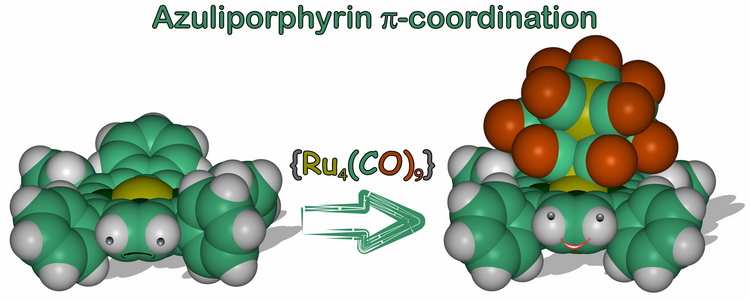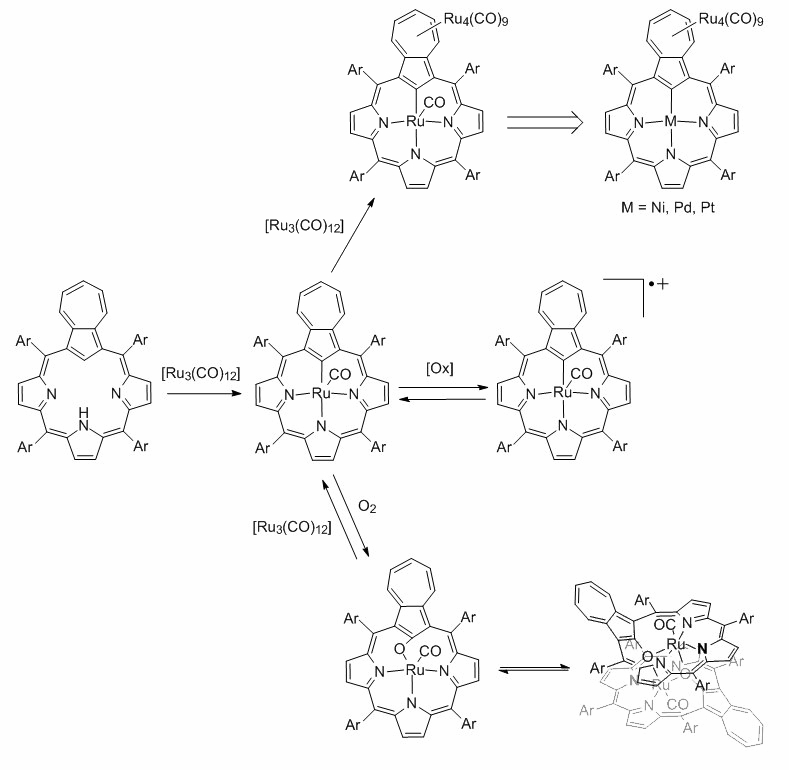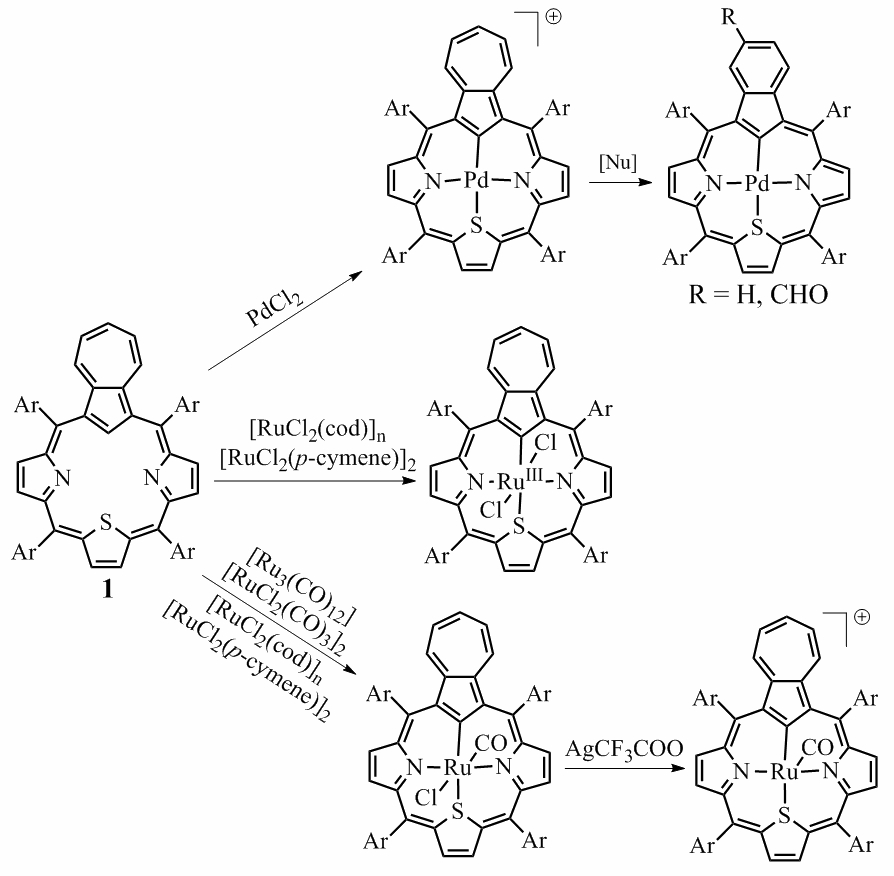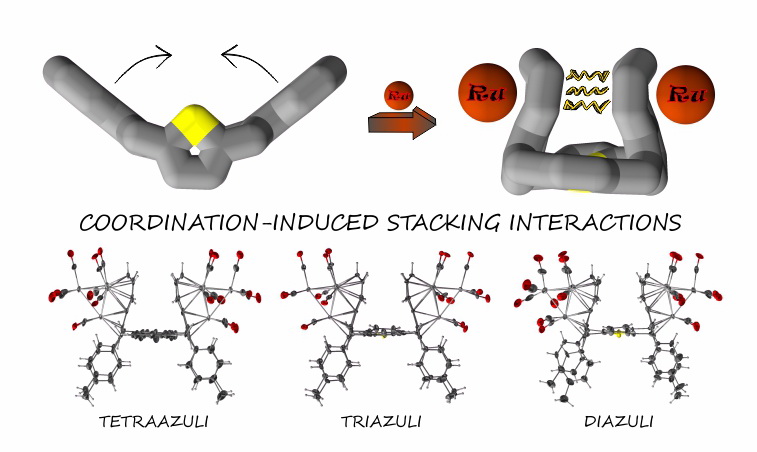

Investigations of azuliporphyrin coordination properties conducted by M. Białek have led to generation of a family of ruthenium complexes.

A ruthenium source can activate not only cavity donors but also a π-surface of an azulene fragment. This reactivity led to a series of bimetallic cluster complexes. Regular complex [Ru(TArAP)(CO)] may undergo either one-electron oxidation forming first-ever observed π-cation radical of metal carbaporphyrinoid or oxygenation with insertion of an oxygen atom into a Ru-C bond. Oxygenated complex can occur as a head-to-tail dimeric structure.

Introduction of an sulfur atom in the 23 position generated singly anionic ligand that reacts with ruthenium sources giving Ru(II) and Ru(III) complexes. Ru(II) complex exists as a mixture of conformers, in which the thiophene ring is tilted toward or outward the axial chloride as confirmed by NMR and DFT. Ru(III) also exists as a mixture, but, electronic configurational isomers. Its NMR spectrum is explained by taking into account both dxz2dyz1 and dyz2dxz1 contributions. This is strongly supported by DFT studies. Finally reaction of 23-tiaazuliporphyrin with palladium produces cationic complex with increased macrocyclic aromaticity. It is very susceptible to nucleophilic attacks that induce seven-membered ring contraction of thiaazuli complex to thiabenzocarba one.

We also observed that the π-coordination of ruthenium clusters to two azulene platforms incorporated into multiazuliporphyrinogens (di-, tri-, and tetraazuliporphyrinogen) alters azulenes electronic structures and induces a distinctive tweezing movement of coordinated "wings". Formation of such a complex proceeds without any metal coordination in the cavity. Coordinated azulene platforms are in a stacking distance and as we showed there is a possibility of free azulene insertion between the "wings" to form a weak inclusion complex.
Further reading
Białek, M. J.; Latos-Grażyński, L. Merging of inner and outer ruthenium organometallic coordination motifs within an azuliporphyrin framework. Chem. Commun. 2014, 50, 9270.
Białek, M. J.; Białońska, A.; Latos-Grażyński, L. Oxidation and Oxygenation of Carbonyl Ruthenium(II) Azuliporphyrin. Inorg. Chem. 2015, 54, 6184.
Białek, M. J.; Latos-Grażyński, L. Palladium(II), Ruthenium(II) and Ruthenium(III) Complexes of 23-thiaazuliporphyrin. The Case of Coordination-induced Contraction. Inorg. Chem. 2016, 55, 1758.
Białek, M. J.; Sprutta, N.; Latos-Grażyński, L. Coordination-Induced Molecular Tweezing – Ruthenium Clusters Docked at Azuliporphyrinogens. Inorg. Chem. 2016, 55, 12061.